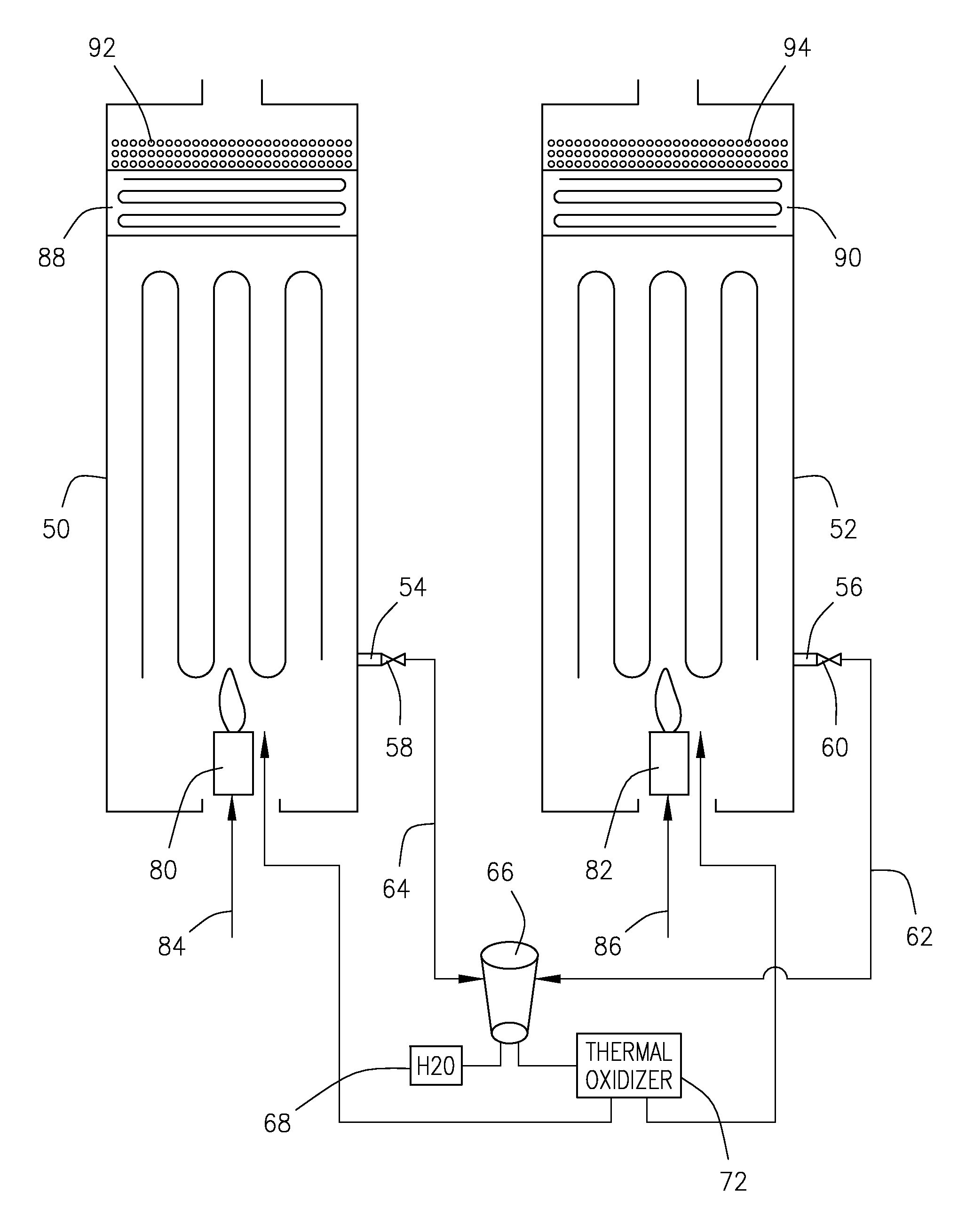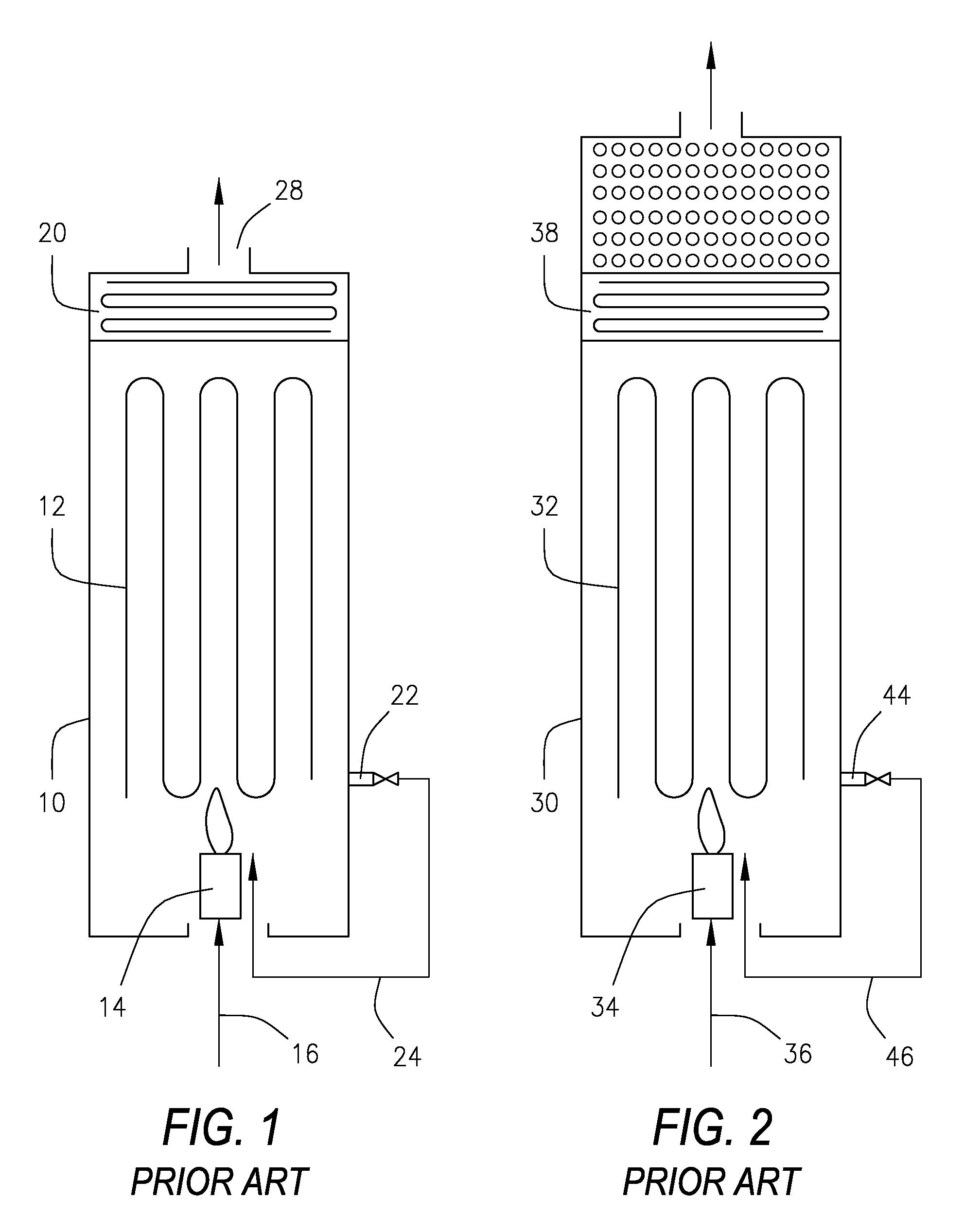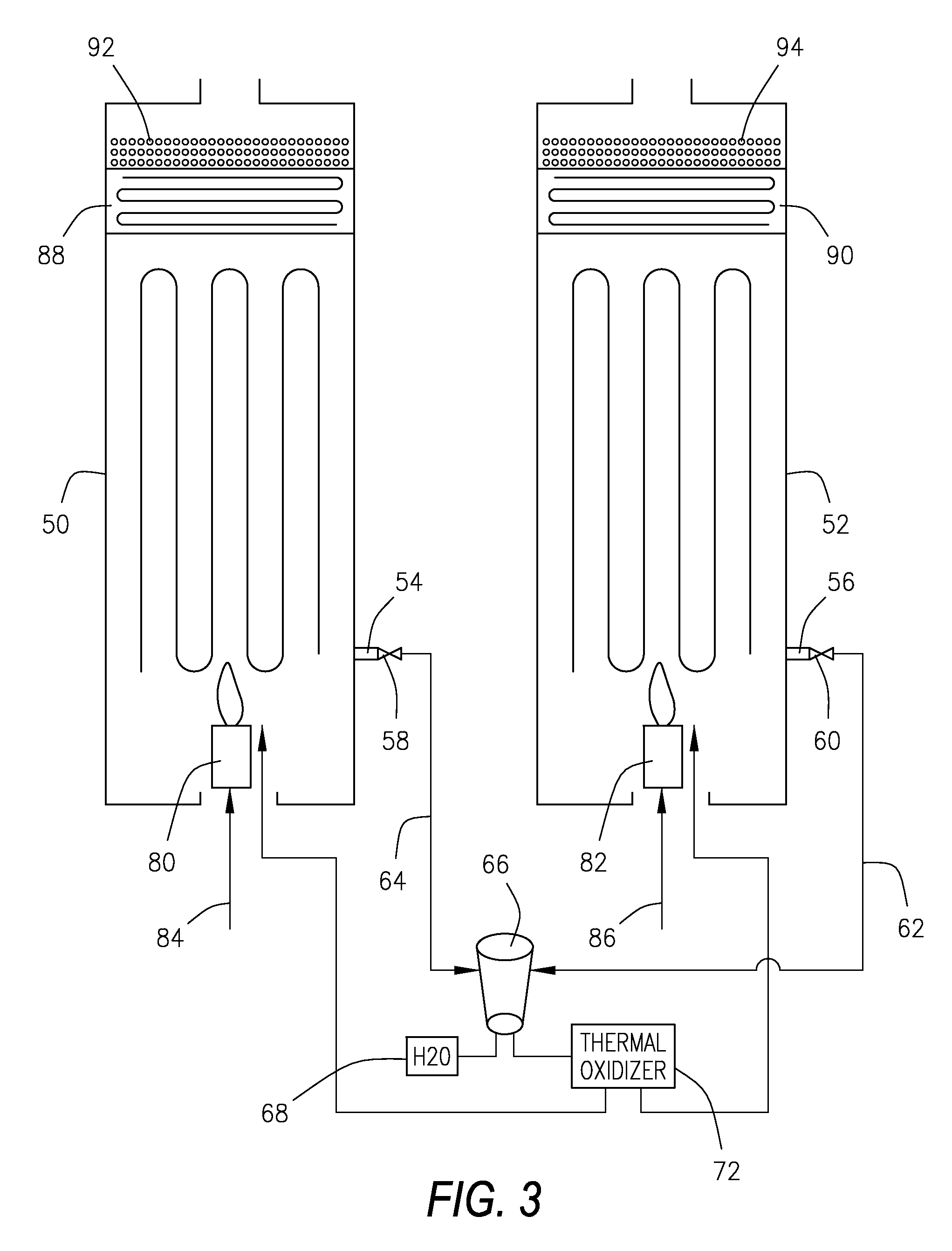Coke treatment process and system to minimize NOX emissions and minimize catalyst volume
a catalyst volume and treatment process technology, applied in the direction of combustion process, lighting and heating apparatus, combustion types, etc., can solve the problems of low catalyst volume, low catalyst volume, slow deposition of coke, etc., and achieve the effect of minimizing catalyst volume and minimizing nox emissions
- Summary
- Abstract
- Description
- Claims
- Application Information
AI Technical Summary
Benefits of technology
Problems solved by technology
Method used
Image
Examples
Embodiment Construction
[0023]The embodiments discussed herein are merely illustrative of specific manners in which to make and use the invention and are not to be interpreted as limiting the scope of the instant invention.
[0024]While the invention has been described with a certain degree of particularity, it is to be noted that many modifications may be made in the details of the invention's construction and the arrangement of its components without departing from the spirit and scope of this disclosure. It is understood that the invention is not limited to the embodiments set forth herein for purposes of exemplification.
[0025]Referring to the drawings in detail, FIG. 3 illustrates an example of a preferred embodiment of a method and a system to treat coke particles in order to minimize NOx emissions and to minimize catalyst volume in accordance with the present invention. At least one furnace, reactor or vessel is provided. In the present embodiment, a pair of vessels 50 and 52 are depicted although it w...
PUM
 Login to View More
Login to View More Abstract
Description
Claims
Application Information
 Login to View More
Login to View More - R&D
- Intellectual Property
- Life Sciences
- Materials
- Tech Scout
- Unparalleled Data Quality
- Higher Quality Content
- 60% Fewer Hallucinations
Browse by: Latest US Patents, China's latest patents, Technical Efficacy Thesaurus, Application Domain, Technology Topic, Popular Technical Reports.
© 2025 PatSnap. All rights reserved.Legal|Privacy policy|Modern Slavery Act Transparency Statement|Sitemap|About US| Contact US: help@patsnap.com



